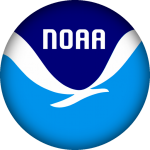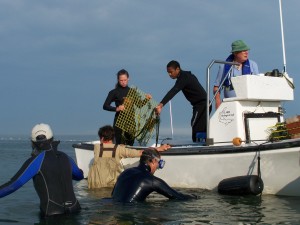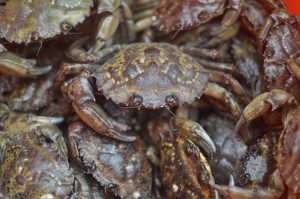
In January and February 2014, NOAA’s Maine Coastal Program will be presenting five half-day workshops in Ellsworth, Freeport, Machias, Saco and Thomaston to address water quality. Attendance is free!
You can find out more about the workshops here.


In January and February 2014, NOAA’s Maine Coastal Program will be presenting five half-day workshops in Ellsworth, Freeport, Machias, Saco and Thomaston to address water quality. Attendance is free!
You can find out more about the workshops here.
In April 2013, Representatives Michaud and Pingree introduced Bill H.R. 1808, the Maine Coastal Islands Wilderness Act of 2013 which would designate 3,125 acres on 13 of the 59 islands in the Maine Coastal Islands National Wildlife Refuge as wilderness due to their wild character, ecological features, and opportunities for solitude and primitive recreation.
The Maine Coastal Islands NWR supports an incredible diversity of biological communities ranging from coastal islands to salt marshes, and its islands provide habitat for a wide variety of migratory seabirds, waterfowl, wading birds, shorebirds, songbirds, and raptors, as well as hosting a diversity of other wildlife species and plants.
Wilderness Designation prescribes a “light touch” management approach to ensure that mature forested habitats are retained and motor vehicles do not damage these fragile islands. Wilderness Designation provides the greatest level of protection for federal lands and an Act of Congress is needed to designate land as wilderness.
The vote on this legislation will be coming up this winter.

NOAA is offering $20,000 – $100,000 for marine debris prevention through education and outreach!
You can find the full description and application materials here.

The U.S. Army Corps of Engineers has awarded the Mount Desert Island Bio Lab a grant of $239,000 for eelgrass restoration in Frenchman Bay. The grant will enable the Lab and its partners to restore an additional 214 acres of subtidal habitat off Lamoine, Bar Harbor, and Trenton over the next two years.
The grant is the first to be awarded in Maine under the Estuary Habitat Restoration Act of 2000 and one of only two to have ever been awarded in New England. The Army Corps grant will fund two years of restoration and research activity in Frenchman Bay and two AmeriCorps positions at MDIBL.
“With the Army Corps’ support, we will be able to ramp up our research and restoration efforts substantially,” said Jane Disney, director of the Community Environmental Health Laboratory at MDIBL and president of Frenchman Bay Partners. “Our goal is a productive and sustainable future for Frenchman Bay. By restoring eelgrass, we will improve the bay’s economic productivity as well as its biodiversity.”
In what could have sweeping effects through the elver industry, the DMR has proposed regulations that would require elver dealers to use a swipe-card reporting system, and to maintain records of all elver transactions. This regulation would allow the DMR to keep better tabs on the number of elvers caught in Maine, and would also make it more difficult to sell or purchase poached elvers.
On Oct. 2, 2013, Tundi Agardy of Forest Trends visited Mt. Desert Island and facilitated a discussion about market-based approaches to marine conservation. Frenchman Bay Partners executive committee and other stakeholders around the bay participated in the workshop. Agardy then gave a public lecture on her work at the College of the Atlantic.
From the workshop, FBP put together a primer on market-based conservation tools, which you can download here.
Download Agardy’s presentation as a pdf here.
Presentation diagrams are from Agardy et al “Taking Steps toward Marine and Coastal Ecosystem Based Management: An Introductory Guide,” UNEP Nairobi, 2011. Diagrams were produced by the Integration and Application Network of University of Maryland
At College of the Atlantic, students have been developing protocols for measuring the pH on clamflats, and comparing different meters to see which ones are the most precise, and this fall will measure pH on several flats in Bar Harbor. One student, Katie O’Brien, has also buried clam pre-weighed clam at three different sites in look at rate of weight loss of shells as a measurement of the potential threat to clam growth from low pH on clamflats. Those clams are being collected in October and if the technique shows promise, the study will be expanded next year.
Continue reading
Frenchman Bay Partners is working closely with both the Department of Marine Resources and the Maine Inland Fish and Wildlife Service to develop fish-run restoration projects that will have the highest impact. In the last year, the groups set up monitoring on Flanders stream and examined Jones Stream as a possible next site for restoration in the bay.
Before Frenchman Bay Partners ever got started, individual partners were doing stream restoration to enhance diadromous fish populations. Sullivan resident Gary Edwards, who is now a Frenchman Bay Partner, spearheaded the Flanders Stream Alewife Restoration project, which involved opening a culvert and installing fish ladder in the stream. The project was completed this year and alewives could be seen moving up the stream in good numbers. Volunteers monitored the run, with more monitoring expected this year.
FBP draws inspiration from the success of the Somes-Meynell Sanctuary’s alewife restoration work. Alewife numbers continue to increase in the Long Pond-Somes Pond watershed, with more than 37,000 fish moving upstream this year, an increase from a few hundred fish to current levels in less than ten years. This model for stream restoration shows the type of restoration possible for small coastal streams with good connections to lakes and ponds. Some FBP partners helped with the monitoring and maintenance of this constantly improving fish run. Congratulations to the Somes-Meynell Sanctuary for leading this excellent project.
During the summer of 2013, a group from Mount Desert Island Biological Laboratory and Southern Maine Community College began a benthic survey of numerous sites in Frenchman Bay. The survey was undertaken to compare current benthic species diversity with historical records collected during the first half of the 20th century.
Seven sites in Frenchman Bay were surveyed using a remotely operated vehicle fitted with a color video camera. Numerous videos were taken at each site. In addition, benthic grab samples were collected at each site and benthic species were identified and counted. The seven sites represent locations sampled by the Proctor Survey of 1926-1930. Several sites represent ledges or areas where large numbers of groundfish were historically caught by fisherman from Frenchman Bay. The project was funded by a grant from the Davis Conservation Foundation to Charles Wray. Shannon White, MDIBL Marine Specialist, and Elizabeth Thompson and Brian Tarbox from SMCC all worked collaboratively on the survey project. Data and video will be made available once it is analyzed.
 The Frenchman Bay Partners’ plan of restoring an additional 228 acres of eelgrass this summer had to be put on hold when it became clear that eelgrass was not coming back in the restoration areas that had been thriving for years. Not only that, many formerly healthy beds that had been growing at least since mapping began in 1996 were also lost this year. MDIBL’s Community Environmental Health Lab (CEHL) had to quickly change gears to begin studies on possible causes of the loss. Scientists and interns looked into the possibilities of “wasting disease” (the pathogen Labyrinthula zosterae) which caused devastation to the plant in the 1930s, nutrient deficiency in the sediment, temperature changes, and invasive green crabs. Continue reading
The Frenchman Bay Partners’ plan of restoring an additional 228 acres of eelgrass this summer had to be put on hold when it became clear that eelgrass was not coming back in the restoration areas that had been thriving for years. Not only that, many formerly healthy beds that had been growing at least since mapping began in 1996 were also lost this year. MDIBL’s Community Environmental Health Lab (CEHL) had to quickly change gears to begin studies on possible causes of the loss. Scientists and interns looked into the possibilities of “wasting disease” (the pathogen Labyrinthula zosterae) which caused devastation to the plant in the 1930s, nutrient deficiency in the sediment, temperature changes, and invasive green crabs. Continue reading